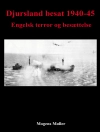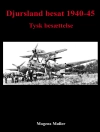The Tatra Mountains form the highest section of the Carpathians and are today part of the Polish-Slovak border. Small in extent but sublime in character, these high mountains could be described as miniature Alps. From the middle of the 19th century onwards, the Tatras became an iconic landscape for Slovak and Polish national movements alike and have kept their considerable cultural significance to this day. This book shows that local disputes over how to use the mountainous terrain regularly gained relevance far beyond the mountain peaks. Conflicts between nature conservationists, tourists, and pasture farmers developed into political conflicts. Struggles for predominance over the mountain range even turned into military aggression against the neighboring state. In other situations, they led to trans-border cooperation projects, which gained international attention.
The book tells the story of the conflicts overcome and the cooperation needed in order to secure an appropriate way of dealing with this small high mountain range, during the course of the 20th century and the deep ruptures brought to the Tatras by multiple changes in state organization and the political system. This long-term perspective is combined with an attention to relations and entanglements with natural regions in other parts of the world, highlighting that the principal lines of conflict remained remarkably constant despite political and socioeconomic ruptures. It thereby offers a comprehensive view on the question of how modern societies conceived of, handled, and struggled over mountain regions.
عن المؤلف
Dr. Bianca Hoenig promovierte an der Universität Basel in Osteuropäischer Geschichte. Ihre Forschungsschwerpunkte sind Umwelt- und Tourismusgeschichte und die Geschichte Ostmitteleuropas.












